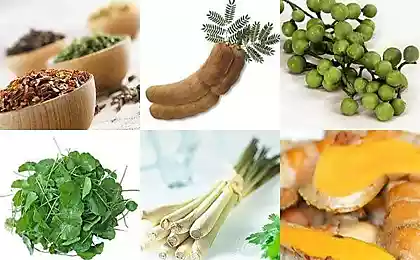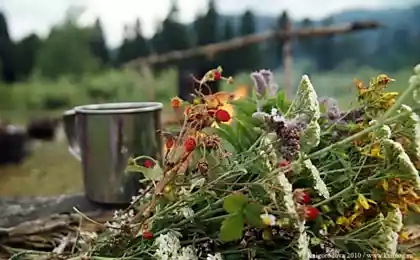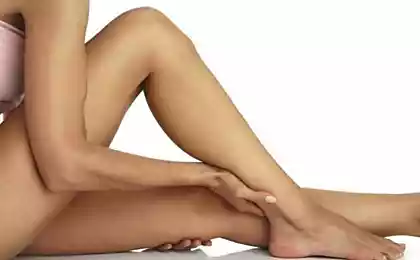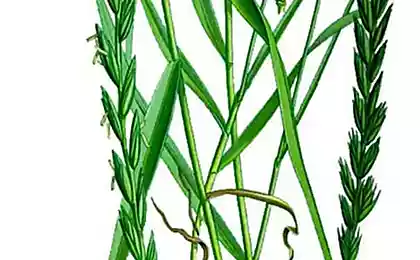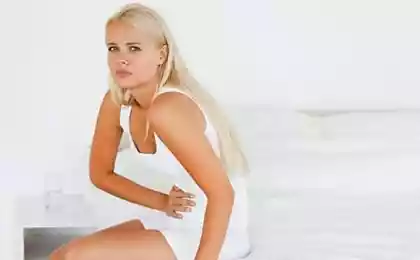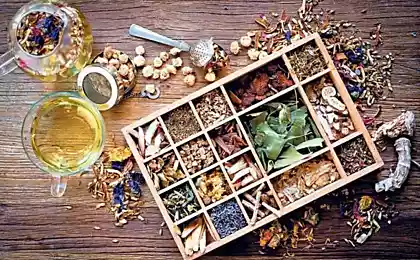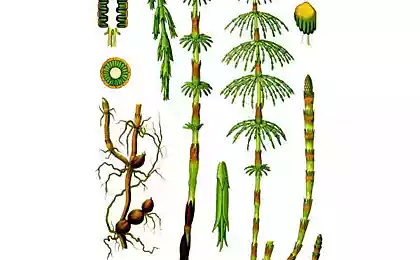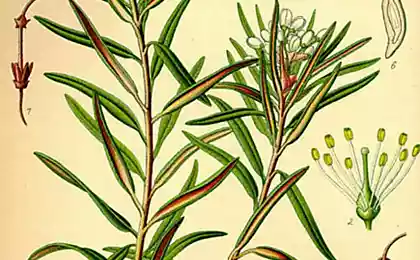600
HORSETAIL in the recipes of folk medicine
Usually, this plant reproduces by spores and vegetatively — segments of rhizomes, is common everywhere except the far North and deserts. Grows on loose sandy and loamy fresh soils in the fields, in fields, on railway embankments, forest clearings, on sandy banks of rivers, in sandy and clay quarries sometimes forms pure thickets. Horsetailcan be considered an indicator of increased soil acidity.
Attention, the plant is poisonous!
Even the great Avicenna used the juice to treat wounds and ulcers, and infusions at fault — for the treatment of tumors of the liver and stomach, dropsy, and intestinal disorders.

Drugs plants on diuretic effects are superior kidney tea. In addition, horsetail has a styptic, antimicrobial and anti-inflammatory properties. The plant plays an important role in metabolic processes and functional activity of connective tissue, mucous membranes, blood vessel walls. This is especially important for bone development.
Fluid extract of aerial parts, infusion and decoction is used as:
Used as a hemostatic hemorrhoids, uterine, pulmonary, nasal, intestinal and gastric hemorrhage; acute and chronic lead poisoning.
In folk medicine - pulmonary tuberculosis, dysentery, diarrhea, rheumatism, dropsy, gout, jaundice, liver diseases, bronchitis, atherosclerosis, diseases of the kidneys and bladder (including kidney stones).
Externally in the form of baths, lotions and compresses - eczema, boils, strigose and itchy herpes.
As a rinse - at a stomatitis and other inflammatory processes of the mucous membrane of the oral cavity.
Powder - for treatment of wounds and ulcers (as a styptic and disinfectant).
Juice (orally) - as an anti-inflammatory, disinfectant, astringent, diuretic in diseases of the kidneys and bladder.
Use plants as a means of improving blood circulation with stagnant phenomena accompanying cardiac and other diseases, especially when pleurisy with a large amount of exudate, edema.
The essence of the fresh plant is used in homeopathy. Horsetail herb is included with asthma medicines and diuretic teas.
In folk medicine, horsetail is included in the fees that are applied topically for ulcers, wounds, aging. From the infusion and juice of the plant make lotions, compresses, baths for wounds, ulcers, abrasions, abscesses, boils, herpes, eczema, osteomyelitis, tuberculosis of the skin, open the affected area sprinkled with spores.
Cleansing properties of horsetail are enhanced in mixtures and charges for urolithiasis, nephritis, pyelitis, cystitis, enuresis in prostatitis, adenoma, and also helps to eliminate sand and stones from kidneys and bladder.
Horsetail baths (outer): baths stimulate metabolism in the skin and are good for poor circulation and also affect swelling, fractures, frostbite, abscesses, and suppuration of bones (open fractures). Eguisetophyta baths also facilitate the state in most rheumatic diseases and metabolic disorders in gout.
Urolithiasis, edema of cardiac origin, inflammatory diseases of the bladder, of the liver: brew 25 g herb to 200 ml of boiling water, boil for 30 minutes on low heat, strain, pour boiled water to the original volume. Take 1 tbsp 3-4 times a day after meals as a diuretic for edema renal and cardiac origin, exudative pleurisy, inflammatory diseases of the kidney, bladder. The same decoction of horsetail, you can also rinse the mouth and throat, wash wounds, ulcers, bed sores areas of skin affected by eczema, furunculosis, to make compresses on the sore joints.
The use of the juice: wash, chop fresh horsetail grass, squeeze the juice. Store in a cool place. Take 2 tsp 3-4 times a day as a diuretic for edema. To wash a bleeding, suppurating wounds, ulcers. You can drip into the nose, 2-3 drops of frequent nasal bleeding.
Krovoostanavlivayuschee fee: equal shares in equal amount grind and mix this composition — from the leaves of the silver birch, grass smartweed, nettle and horsetail. Take a tablespoon in 300ml of boiling water, insist 20 minutes, drink half a Cup. The same decoction can make lotions on the wound.
You should pay attention to the presence in the herb horsetail is silicic acid, especially its salts, due to their grass has a cleansing and diuretic effect. Increase flavonoids. Edema patients with heart defects urine output increases more than 2 times. The effect starts on the first day of treatment and lasts for the entire course of treatment, and after discontinuation of the medication continues for another 2-3 days. Side effects in patients with healthy kidneys is not observed. Horsetail is contraindicated in nephritis and nefrosa-nephritis. The plant has a hemostatic effect, especially in hemorrhoidal and uterine bleeding.
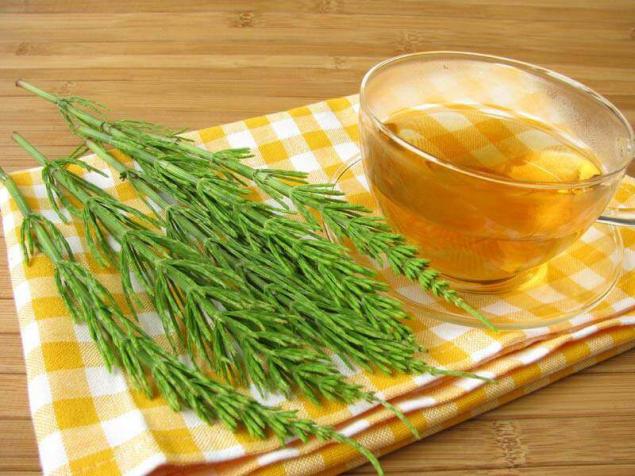
Edema on the basis of circulatory failure: administered in the form of decoction of 20 g of material per 200 ml of water on a tablespoon 3 times a day as a diuretic, and also when pleurisy with a large number of exudate and inflammation of the bladder and urinary tract. A decoction is recommended for baths and compresses for trudnozazivate wounds and boils, for rinsing the mouth and throat in inflammatory phenomena, for washing the nasal cavities with frequent bleeding.
Interestingly, although horsetail is poisonous, but the spring juicy young shoots can be eaten. The nodules on the roots are eaten raw or baked. A decoction of the rhizomes is used for dyeing of wool fabric in gray and yellow.
In veterinary medicine the powder of the herb horsetail sprinkled wounds and ulcers.
The spore shoots dyed wool in yellow and green.
Powder used for polishing furniture.
Even the collection of raw materials necessary to remember that the real drug effect is the horsetail.
Should be wary of horsetail growing near water — is a horsetail swamp, the plant is poisonous.published
P. S. And remember, only by changing their consumption — together we change the world! ©
Join us in Facebook , Vkontakte, Odnoklassniki
Source: www.narmedlek.info/10material/xvosch.php
Attention, the plant is poisonous!
Even the great Avicenna used the juice to treat wounds and ulcers, and infusions at fault — for the treatment of tumors of the liver and stomach, dropsy, and intestinal disorders.

Drugs plants on diuretic effects are superior kidney tea. In addition, horsetail has a styptic, antimicrobial and anti-inflammatory properties. The plant plays an important role in metabolic processes and functional activity of connective tissue, mucous membranes, blood vessel walls. This is especially important for bone development.
Fluid extract of aerial parts, infusion and decoction is used as:
- diuretic, hemostatic and hypotensive agent;
- in diseases of the heart and kidneys (especially for edema and other stagnation on the ground of insufficiency of blood circulation)
- in pleurisy, inflammation of the bladder and urinary tract
- in some forms of lung tuberculosis, associated with the violation of silicate metabolism.
Used as a hemostatic hemorrhoids, uterine, pulmonary, nasal, intestinal and gastric hemorrhage; acute and chronic lead poisoning.
In folk medicine - pulmonary tuberculosis, dysentery, diarrhea, rheumatism, dropsy, gout, jaundice, liver diseases, bronchitis, atherosclerosis, diseases of the kidneys and bladder (including kidney stones).
Externally in the form of baths, lotions and compresses - eczema, boils, strigose and itchy herpes.
As a rinse - at a stomatitis and other inflammatory processes of the mucous membrane of the oral cavity.
Powder - for treatment of wounds and ulcers (as a styptic and disinfectant).
Juice (orally) - as an anti-inflammatory, disinfectant, astringent, diuretic in diseases of the kidneys and bladder.
Use plants as a means of improving blood circulation with stagnant phenomena accompanying cardiac and other diseases, especially when pleurisy with a large amount of exudate, edema.
The essence of the fresh plant is used in homeopathy. Horsetail herb is included with asthma medicines and diuretic teas.
In folk medicine, horsetail is included in the fees that are applied topically for ulcers, wounds, aging. From the infusion and juice of the plant make lotions, compresses, baths for wounds, ulcers, abrasions, abscesses, boils, herpes, eczema, osteomyelitis, tuberculosis of the skin, open the affected area sprinkled with spores.
Cleansing properties of horsetail are enhanced in mixtures and charges for urolithiasis, nephritis, pyelitis, cystitis, enuresis in prostatitis, adenoma, and also helps to eliminate sand and stones from kidneys and bladder.
Horsetail baths (outer): baths stimulate metabolism in the skin and are good for poor circulation and also affect swelling, fractures, frostbite, abscesses, and suppuration of bones (open fractures). Eguisetophyta baths also facilitate the state in most rheumatic diseases and metabolic disorders in gout.
Urolithiasis, edema of cardiac origin, inflammatory diseases of the bladder, of the liver: brew 25 g herb to 200 ml of boiling water, boil for 30 minutes on low heat, strain, pour boiled water to the original volume. Take 1 tbsp 3-4 times a day after meals as a diuretic for edema renal and cardiac origin, exudative pleurisy, inflammatory diseases of the kidney, bladder. The same decoction of horsetail, you can also rinse the mouth and throat, wash wounds, ulcers, bed sores areas of skin affected by eczema, furunculosis, to make compresses on the sore joints.
The use of the juice: wash, chop fresh horsetail grass, squeeze the juice. Store in a cool place. Take 2 tsp 3-4 times a day as a diuretic for edema. To wash a bleeding, suppurating wounds, ulcers. You can drip into the nose, 2-3 drops of frequent nasal bleeding.
Krovoostanavlivayuschee fee: equal shares in equal amount grind and mix this composition — from the leaves of the silver birch, grass smartweed, nettle and horsetail. Take a tablespoon in 300ml of boiling water, insist 20 minutes, drink half a Cup. The same decoction can make lotions on the wound.
You should pay attention to the presence in the herb horsetail is silicic acid, especially its salts, due to their grass has a cleansing and diuretic effect. Increase flavonoids. Edema patients with heart defects urine output increases more than 2 times. The effect starts on the first day of treatment and lasts for the entire course of treatment, and after discontinuation of the medication continues for another 2-3 days. Side effects in patients with healthy kidneys is not observed. Horsetail is contraindicated in nephritis and nefrosa-nephritis. The plant has a hemostatic effect, especially in hemorrhoidal and uterine bleeding.

Edema on the basis of circulatory failure: administered in the form of decoction of 20 g of material per 200 ml of water on a tablespoon 3 times a day as a diuretic, and also when pleurisy with a large number of exudate and inflammation of the bladder and urinary tract. A decoction is recommended for baths and compresses for trudnozazivate wounds and boils, for rinsing the mouth and throat in inflammatory phenomena, for washing the nasal cavities with frequent bleeding.
Interestingly, although horsetail is poisonous, but the spring juicy young shoots can be eaten. The nodules on the roots are eaten raw or baked. A decoction of the rhizomes is used for dyeing of wool fabric in gray and yellow.
In veterinary medicine the powder of the herb horsetail sprinkled wounds and ulcers.
The spore shoots dyed wool in yellow and green.
Powder used for polishing furniture.
Even the collection of raw materials necessary to remember that the real drug effect is the horsetail.
Should be wary of horsetail growing near water — is a horsetail swamp, the plant is poisonous.published
P. S. And remember, only by changing their consumption — together we change the world! ©
Join us in Facebook , Vkontakte, Odnoklassniki
Source: www.narmedlek.info/10material/xvosch.php
Scientists have developed a computer chip that uses a million times less energy
Connection to Sky — qigong for getting rid of diseases and prolonging life


